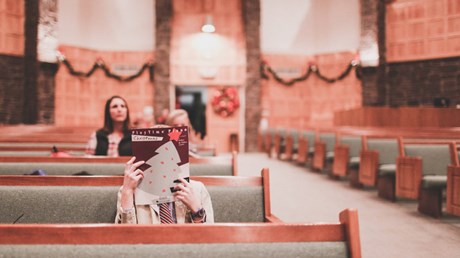Even with today’s nonstop Christmas soundtrack, churches can still embrace the storytelling and nostalgia that comes with seasonal hymns.

“Once a year,” wrote Brennan Manning in Reflections for Ragamuffins, “the Christmas season strikes both the sacred and secular spheres of life with sledgehammer force: suddenly Jesus Christ is everywhere.”
It’s true. When I walk through the grocery store, trying to remember if I have vanilla extract in the pantry, I hear Nat King Cole crooning, “O Come All Ye Faithful” in the background. My daughter comes home from preschool singing, “Joy to the World” (they have been practicing for next week’s school Christmas performance). On Sunday mornings, the hymns include “O Come, O Come, Emmanuel” and “Come, Thou Long Expected Jesus.”
Christmas music is the soundtrack to my life in December. Yet those of us who try our best to center the Incarnation throughout the season experience both joy and exasperation as we hear rich carols shuffled together with “Santa Baby” and “Rockin’ Around the Christmas Tree.”
We worry that the saturation of Christmas music in everyday December life has watered down the meaning and worshipfulness of spiritual carols. It’s hard not to wonder: Has the singing of Christmas carols become an exercise in sentimentality and nostalgia? Do they still have a place in congregational worship?
During the first week of December this year, the most popular songs used in US churches, according to Christian Copyright Licensing International (CCLI), were all Christmas carols. The top five were “O Come All Ye Faithful,” “Joy to the World,” “O Come O Come Emmanuel,” “Hark the Herald Angels Sing,” and “Joy to the World (Unspeakable Joy)”—Chris ...
from Christianity Today Magazine
Umn ministry


.gif)

.gif)
.gif)
